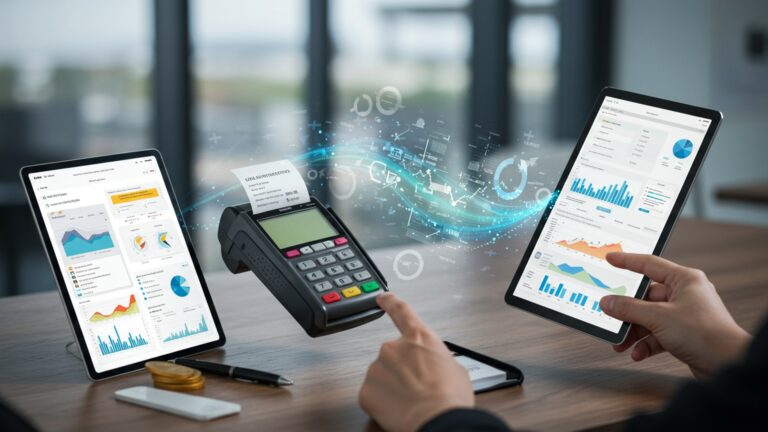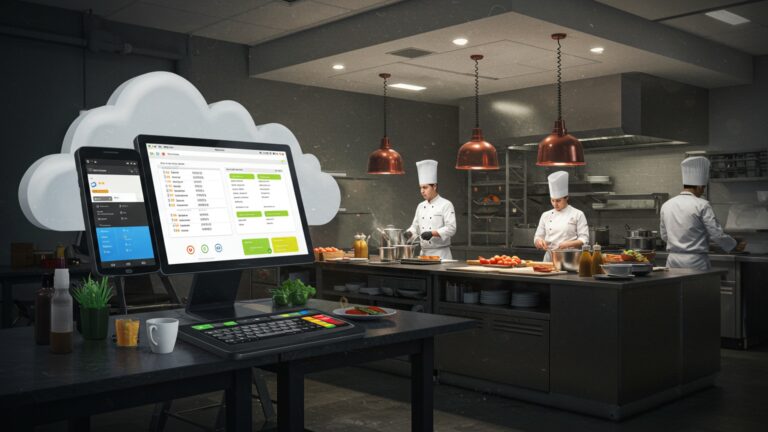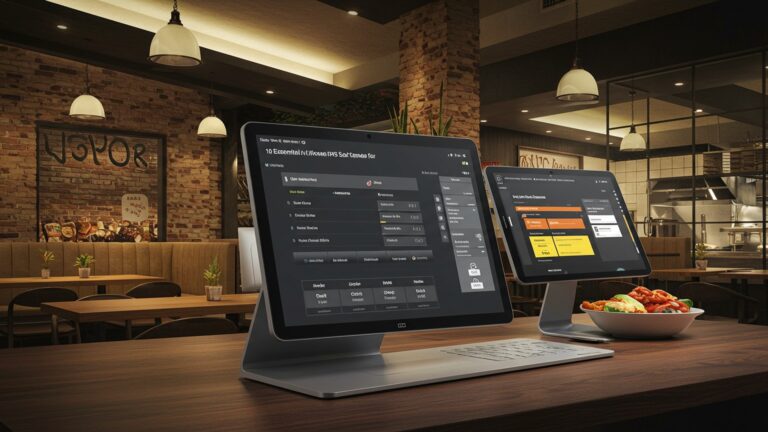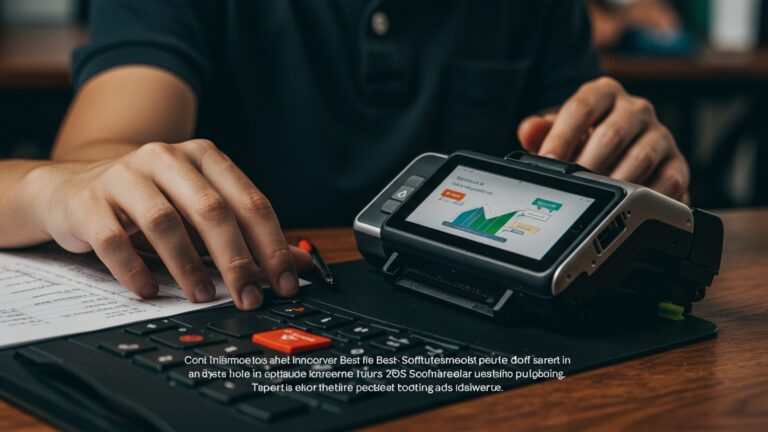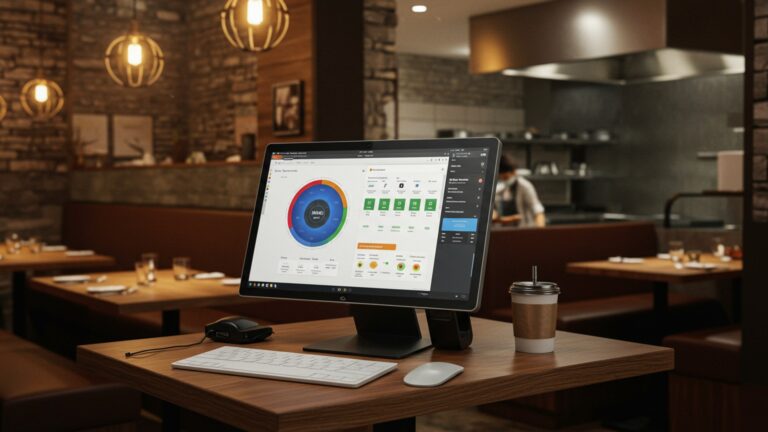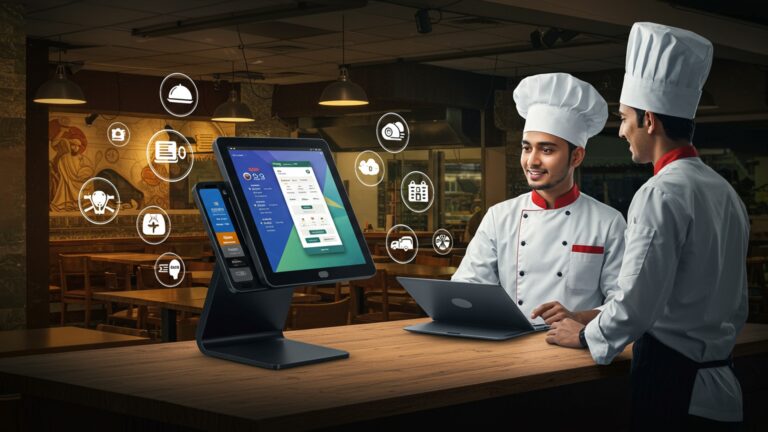How to Choose The Best Restaurant Billing Software India 5 Key Steps
The dynamic Indian restaurant landscape, fueled by rapid digital adoption and an intricate tax structure, demands far more than a simple cash register; it necessitates a robust operational backbone. Modern restaurant billing software India now serves as the central nervous system, seamlessly integrating critical functions from lightning-fast order processing via QR codes to real-time inventory management, crucial GST compliance. smooth integration with popular food delivery aggregators. As UPI transactions dominate the payment ecosystem and customer expectations for speed and accuracy soar, choosing a sophisticated system transcends mere transaction logging. It directly impacts table turnover, optimizes resource allocation, provides invaluable data for menu engineering. ultimately drives the profitability and sustained growth vital for success in this competitive market.
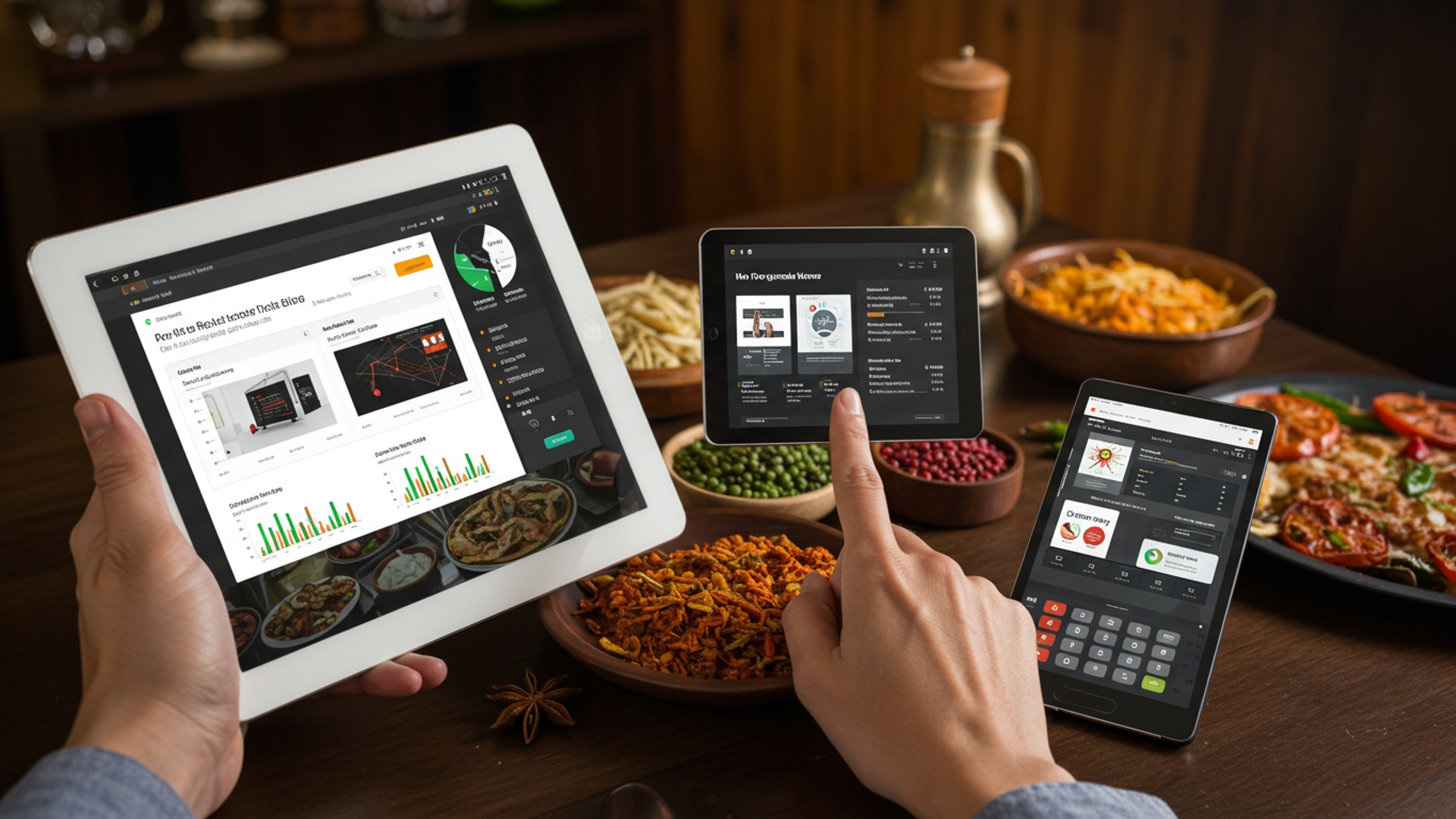
Understanding Your Restaurant’s Specific Needs
The journey to selecting the optimal Restaurant billing software India begins not with evaluating software. with a deep dive into your own establishment. Every restaurant is unique, with its own operational flow, customer base. service style. What works perfectly for a bustling quick-service restaurant (QSR) might be completely inadequate for a fine-dining establishment or a multi-outlet chain. Understanding these nuances is paramount to making an informed decision.
Consider the following aspects of your restaurant:
- Type of Establishment
- Operational Scale
- Menu Complexity
- Customer Flow
- Staffing Model
Are you a café, a bar, a cloud kitchen, a QSR, a casual dining spot, or a fine-dining restaurant? Each type has distinct requirements. For instance, a QSR prioritizes speed and efficient order processing, often with self-service or kiosk integration. A fine-dining restaurant, on the other hand, needs robust table management, reservation systems. split-bill functionalities.
Do you have a single outlet or multiple branches? A single-outlet café might do well with basic billing, while a multi-outlet chain requires centralized management, consolidated reporting. inventory tracking across all locations.
Does your menu change frequently? Do you offer customization options, combo meals, or daily specials? The software should be flexible enough to handle these variations easily.
How do customers place orders? Is it dine-in, takeaway, delivery, or a mix? The software should support all relevant order channels, including integration with third-party food aggregators if applicable.
How many staff members need to use the system? Is training a significant concern? User-friendliness becomes critical for high staff turnover environments.
A helpful exercise is to map out your current order-to-payment workflow. Identify pain points, bottlenecks. areas where automation could bring significant improvements. For example, if your staff spends too much time manually updating inventory after each sale, an integrated inventory module becomes a high priority. This initial self-assessment forms the foundation for evaluating various Restaurant billing software India solutions.
Evaluating Core Features and Functionality
Once you have a clear understanding of your restaurant’s needs, the next step is to evaluate the core features and functionality offered by various Restaurant billing software India providers. While a basic billing module is standard, modern software goes far beyond simple invoicing. Here are the key modules and functionalities to look for:
- Point of Sale (POS) System
- Order Management
- Table Management
- Billing & Payments
- User Interface (UI)
- Inventory Management
- Recipe Management
- Stock Tracking
- Vendor Management
- Wastage Management
- Customer Relationship Management (CRM)
- Customer Database
- Loyalty Programs
- Feedback Management
- Reporting and Analytics
- Sales Reports
- Inventory Reports
- Staff Performance
- Profit & Loss
- Kitchen Display System (KDS) Integration
- Digital display of orders in the kitchen, reducing errors and improving order fulfillment speed.
- Order status tracking (pending, cooking, ready).
- Online Ordering & Delivery Management
- Native online ordering platform or seamless integration with popular food aggregators like Zomato and Swiggy.
- Delivery tracking and management.
This is the heart of your billing operations.
Ability to take orders quickly, modify them, add special instructions. send them to the kitchen display system (KDS) or printer.
For dine-in restaurants, features like table status tracking (occupied, vacant, reserved), merging/splitting tables. transferring orders between tables.
Generate bills, split bills (by item or by person), apply discounts, manage multiple payment methods (cash, card, UPI, digital wallets). integrate with payment gateways.
Intuitive, easy-to-navigate interface for quick order entry and reduced errors.
Crucial for cost control and reducing waste.
Define recipes with precise ingredient quantities, allowing for automated deduction of raw materials upon sale of a finished dish.
Real-time tracking of raw materials and finished goods.
Track purchases, manage suppliers. automate reorder alerts.
Record and examine food wastage.
Building customer loyalty.
Store customer contact details, order history. preferences.
Manage points-based systems, discounts. gift cards.
Collect and examine customer feedback.
Data-driven decision making.
Daily, weekly, monthly sales breakdowns by item, category. payment type.
Stock levels, consumption patterns. cost of goods sold (COGS).
Track individual staff sales and productivity.
Insights into profitability, helping identify best-selling and least-selling items.
Streamlines kitchen operations.
Essential for the modern restaurant.
When assessing these features, look for practical demonstrations or trial periods. A feature listed on a brochure might not always translate to seamless real-world usability. For example, a restaurant manager using
[Software_Name]. inventory. stock_alert
to set automated alerts for low stock levels can significantly reduce the chances of running out of popular ingredients during peak hours, thereby ensuring smooth operations and customer satisfaction.
Considering Scalability and Integration Capabilities
A significant factor in choosing the best Restaurant billing software India is its ability to grow with your business and integrate seamlessly with other essential systems. Investing in software that quickly becomes obsolete or creates data silos can be more detrimental than beneficial in the long run.
- Scalability
- Centralized Management
- Remote Access
- Automatic Updates
- Flexible Pricing
- Integration Capabilities
- Payment Gateways
- Accounting Software
- Third-Party Delivery Aggregators
- Loyalty & CRM Platforms
- HR/Payroll Systems
Your restaurant might start as a single outlet. with success, expansion could be on the horizon. The software you choose should be able to handle increased transaction volumes, additional users. new locations without a complete overhaul. This often points towards cloud-based solutions, which offer:
Manage multiple outlets from a single dashboard.
Access reports and manage operations from anywhere.
Cloud software typically receives automatic updates, ensuring you always have the latest features and security patches.
Often subscription-based, allowing you to scale up or down based on your needs.
On-premise solutions, while offering greater control and potentially lower long-term costs for large, established businesses, can be less flexible for rapid expansion and require significant IT infrastructure and maintenance.
No software operates in a vacuum. Your billing system needs to communicate effectively with other tools crucial for your business. Key integrations to look for include:
Seamless integration with popular payment processors (e. g. , Razorpay, PayU) for smooth card and UPI transactions. This is a non-negotiable for any modern Restaurant billing software India.
Integration with platforms like Tally, Zoho Books, or QuickBooks to automate financial data entry, reduce manual errors. simplify tax compliance (especially GST).
Direct integration with Swiggy, Zomato. other delivery platforms to consolidate orders into your POS system, preventing missed orders and streamlining delivery operations.
If the software’s native CRM isn’t sufficient, ensure it can integrate with specialized loyalty programs.
For larger establishments, integration can simplify staff management and payroll processing.
A practical example of strong integration is when a customer places an order via Zomato. it automatically appears on your KDS and updates your inventory in real-time, all without manual intervention. This level of automation significantly boosts efficiency and accuracy.
Assessing User Experience and Support
Even the most feature-rich Restaurant billing software India is only as good as its usability and the support behind it. A system that is difficult to learn or prone to glitches can lead to frustration, errors. ultimately, a negative impact on your operations and staff morale.
- User Experience (UX) and Ease of Use
- Clarity
- Speed
- Error Prevention
- Customization
- Accessibility
- Customer Support and Training
- Availability
- Channels
- Language
- Training
- Updates and Maintenance
The interface should be intuitive and require minimal training. Consider the following:
Is the layout clean and uncluttered? Are functions logically grouped?
Can staff process orders and payments quickly, especially during peak hours? Every second counts in a busy restaurant.
Does the system guide users to prevent common mistakes, like incorrect order entries or payment errors?
Can the interface be customized to display frequently used items or functions prominently?
Is it accessible on various devices (desktop, tablet, mobile) if required?
A restaurant owner shared an anecdote about switching to a new POS: “Our previous system was so complex, new hires took days to get comfortable. With the new Restaurant billing software India, they’re taking orders confidently within an hour. That immediate productivity boost and reduced training time was invaluable.” Always ask for a demo or a free trial to let your staff test the system firsthand.
Technical issues are inevitable. The quality of support can make or break your experience with the software.
Is support available 24/7, or only during business hours? What are the response times?
Do they offer support via phone, email, chat, or in-person?
Is support available in local Indian languages if needed, or primarily English?
What kind of initial training is provided? Are there online tutorials, documentation, or webinars available for ongoing learning?
How are software updates handled? Is there a clear communication channel for maintenance schedules?
Look for vendors with a strong reputation for customer service within the Indian market. Check online reviews, ask for references. inquire about their service level agreements (SLAs). A robust support system ensures that any operational hiccups are resolved swiftly, minimizing downtime and potential revenue loss.
Analyzing Pricing, Security. Compliance
The final steps involve a critical assessment of the financial implications, the security of your data. adherence to regulatory standards, especially crucial for any Restaurant billing software India.
- Pricing Models and Total Cost of Ownership (TCO)
- Subscription (SaaS) vs. One-time Purchase
- Tiered Pricing
- Hidden Costs
- Payment Gateway Fees
- Data Security and Privacy
- Data Encryption
- Access Controls
- Backup and Recovery
- Compliance
- Regulatory Compliance (India Specific – GST)
- GST Billing
- GST Reporting
- E-invoicing (if applicable)
- HMRC/SAC Codes
Software pricing can be complex. Don’t just look at the initial cost; consider the Total Cost of Ownership over several years.
SaaS models usually involve monthly/annual fees but include updates and support. One-time purchases might seem cheaper upfront but often incur separate costs for updates, maintenance. support.
Many vendors offer different plans based on features, number of users, or number of outlets. Ensure the chosen tier meets your current and future needs.
Inquire about costs for hardware integration, additional modules, advanced reporting, data migration. specific training.
While not directly part of the software price, interpret how the software integrates with payment gateways and any associated transaction fees.
Create a detailed budget that includes all potential costs for at least 3-5 years. A comparison table can be extremely helpful here:
| Feature/Cost | Software A (SaaS) | Software B (On-Premise) |
|---|---|---|
| Monthly/Annual Fee | ₹X,XXX | ₹0 (after initial purchase) |
| One-time Purchase Cost | ₹0 | ₹Y,XXX |
| Hardware Compatibility | Standard POS hardware | Specific hardware requirements |
| Updates & Maintenance | Included | Annual fee (₹Z,XXX) |
| Customer Support | Included (standard) | Extra cost (₹P,XXX/year) |
| Initial Setup/Training | Often included | ₹Q,XXX |
| Scalability to N outlets | Easy (tier upgrade) | Complex, new licenses/hardware |
Your billing software handles sensitive customer data and financial details. Robust security is non-negotiable.
Ensure data is encrypted both in transit and at rest.
Role-based access to ensure staff only see data relevant to their duties.
What are the data backup protocols? How quickly can data be recovered in case of a system failure?
Does the vendor adhere to relevant data protection standards (e. g. , GDPR principles, even if not directly applicable in India, they indicate a commitment to data privacy)?
For any Restaurant billing software India, GST compliance is paramount.
The software must be capable of generating GST-compliant invoices with correct tax calculations (CGST, SGST, IGST).
Ability to generate various GST reports (GSTR-1, GSTR-3B) that can be easily exported or directly integrated with GST filing tools.
For businesses exceeding certain turnover thresholds, e-invoicing capabilities are crucial.
Proper categorization of menu items with their respective Harmonized System of Nomenclature (HSN) or Service Accounting Code (SAC) for accurate GST application.
A failure in GST compliance can lead to significant penalties. Always confirm with the vendor that their software is fully updated to the latest Indian tax regulations. A reputable vendor will be proactive in updating their system to meet evolving compliance requirements.
Conclusion
Ultimately, selecting the ideal restaurant billing software in India isn’t merely about ticking features off a list; it’s about finding a seamless extension of your operations. Remember, the true value lies in its ability to adapt to your unique challenges, from managing diverse payment options like UPI to smoothly integrating with online delivery platforms, a crucial aspect in today’s market. My personal tip: always insist on a live demo using your actual menu and sales data, especially testing how it handles peak hour rush or specific GST calculations. I’ve witnessed establishments compromise on this, only to face significant operational bottlenecks later. The right software, like one that provides real-time sales analytics to quickly adjust your menu or staffing, is a strategic investment, not just an expense. It empowers you to elevate customer experience, streamline order processing. ultimately, boost your restaurant’s profitability. Embrace this decision as an opportunity to future-proof your business and propel it towards sustained success in India’s competitive culinary landscape.
More Articles
7 Smart Ways Restaurant Billing Software India Boosts Your Profits
How to Choose the Best 7 POS Systems for Your Small Indian Restaurant
Mastering Restaurant POS Software A Comprehensive Guide for Efficient Management
How to Master Inventory Management POS India 10 Strategies for Success
Unlock Efficiency How to Choose Top POS Billing Software for Your Business
FAQs
Why is picking the right billing software so vital for my restaurant in India?
Choosing the right software is crucial because it directly impacts your daily operations, customer experience, inventory management. financial reporting. A good system streamlines processes, minimizes errors. helps you stay compliant with local regulations like GST.
What are the absolute must-have features for restaurant billing software in India?
You should definitely look for robust Point-of-Sale (POS) capabilities, comprehensive inventory management, detailed reporting for sales and profits, seamless integration with popular online delivery platforms. essential GST compliance features. Cloud-based access is also a massive advantage for flexibility.
How much should I expect to budget for decent restaurant billing software here?
Prices can vary quite a bit depending on the features offered, the vendor. the level of support. Some solutions are subscription-based (monthly/annually), while others might be a one-time purchase. Don’t just look at the initial cost; consider ongoing support fees and potential add-ons. It’s an investment, so focus on value rather than just the lowest price.
Is it a huge hassle to switch to new billing software? What about training my staff?
Switching might seem daunting. many reputable providers offer migration assistance to make the transition smoother. Prioritize software with an intuitive, user-friendly interface that’s easy for your staff to learn. Good vendors also provide thorough training and ongoing support to ensure everyone gets up to speed quickly.
My restaurant is growing rapidly. How do I ensure the software I pick can handle future expansion?
Scalability is absolutely key! Choose a solution that can comfortably handle increasing order volumes, manage multiple outlets if you plan to expand. easily integrate new features as your business evolves. Cloud-based solutions typically offer greater flexibility for growth.
What kind of customer support should I demand from a software vendor in India?
Excellent local support is non-negotiable. Look for vendors who offer 24/7 availability, multiple contact channels (phone, email, chat). have a strong reputation for quick, effective problem-solving. You don’t want your restaurant operations stalled due to a software glitch with no one to call.
Should I really prioritize software that integrates with online food delivery apps?
Absolutely, it’s almost a necessity in today’s market! Integration with popular online food delivery platforms like Zomato and Swiggy streamlines order processing, drastically reduces manual errors. helps you efficiently manage your online presence and sales channels.

